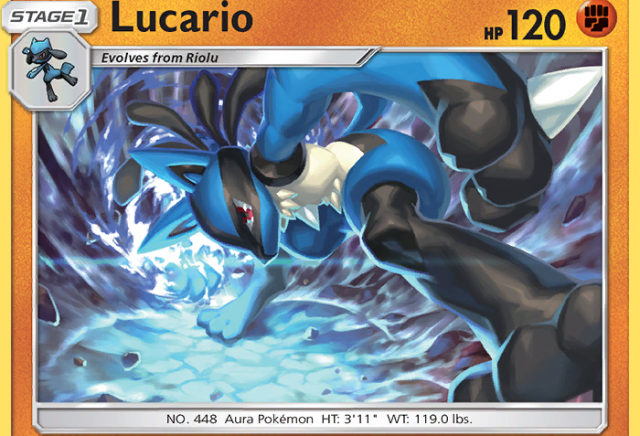
Pokémon Sun and Moon Burning Shadows: Rock Steady Review
This being my second foray into reviewing Pokémon starter decks, the first being here (link). The nationals have been played and it shaped up to be a rather interesting time. Having quite the variety of decks and tactics, I don’t remember being that big a thing when we were in our 4th generation: Sinnoh. Again, I shall endeavour to review the two latest starter decks in the Burning Shadows expansion featuring: Alolan Ninetails and Lycanroc.
The review process is breaking down what are the most efficient energy to damage and effects being top priority, deck variety and consistency, and whether or not it has a stand out Pokémon that deserves to be in a deck. With the end result being which is probably going to be the more viable competitive deck if you weren’t buying booster packs to start your deck. One change to the formula in the review process is that the decks will be highlighted before comparing directly, as the previous review became too muddied in comparison for the end to be clear.
Lycanroc’s Rock Steady Starter Deck:
If you were expecting a standout starter deck from here then you might be disappointed. Whilst design wise this deck is arguably the better one, it does very little to meet a solid expectation of energy to damage. Being the only stage 2 Pokémon Rhyperior, its pre-evolutions Rhydon and Rhyhorn both suffer somewhat terrible attacks with very little substance beyond stable attacks. Rhyhorn being the worst offender with its 4 energy cost (3 Fighting, 1 Colourless) Megahorn which requires a coin toss to deal a potential 120 or nothing. Rhyperior saves this slightly with its Toppling Wind ability (when placed from hand to evolve, you may discard top 3 cards of opponent’s deck) can be handy, if it weren’t for the lack of deck devour set ups. But it’s only attack Rock Wrecker with a 4 energy cost (2 Fighting, 2 Colourless) which ignores Weakness and Resistance with a 1-turn cooldown. The high HP could be a counter to this, but when the damage isn’t potentially substantial when some of the more single hard hitting decks on play. Rhyperior falls short to the punch on this count.

The stage 1 flagship Pokémon Lycanroc has similar problems in this regard, having no standout abilities or special effects. It falls to the wayside as being a dud, with the Accelerock dealing 100 damage for 3 energy cost (2 Fighting, 1 Colourless) being okay. But this is overshadowed by Lucario with Submarine Blow dealing 120 damage at the cost of 3 Fighting energies. Coupled with its ability Stance, which nulls damage and effects until the end of the opponent’s next turn, plus the extra 10HP. This is standout Pokémon this deck has, if the meta wasn’t predominantly a Psychic fest then Lucario might perform better competitive wise. But comparing Lucario directly to Lycanroc, it’s hard to argue for the other due to Riolu being similar with its low costs and the consistent damage output. The last stage 1 pokemon Meowstic plays as a better support Pokémon with the potential to be a heavy hitter at a somewhat more extreme cost compared to a Vespiquen deck which relied on having lots of Pokémon in the discard pile. It’s double colourless attack Hand Kinesis in the right hand can lead to potentially devastating plays where the damage is directly affected by the cards in your hand. Plus it’s 1 Psychic energy cost Allure draws 3 cards, combined with Solrock and Double Draw with its 1 Colourless cost. This can lead to a devastating opener. But, if a game stretched out, this isn’t a great mid to long game strategy due to the low 90HP both Meowstic and Solrock have. Even if the 1 Energy cost retreat helps even the playing field.
Bouffalant struggles to be a real contender, making a great wall if needed, with Bouffant Head dealing 30 damage at a double Colourless cost and reduces damage taken by 30 (after Weakness /Resistance). Knock Over at 3 Colourless cost is a very niche and low reward move with a near 30 to 1 ratio that may remove a stadium from play. Same applies for Sawk, but is less idle due to typing, inability to retreat with a relatively low 90HP.

Deck variety and consistency is okay at best across the board, featuring 15 basic Pokemon with some strong opening low energy cost moves. This is a consistent deck that is boosted with its Trainer Item and Supporter cards. With standout and staple cards including: Professor Kukui (Supporter: draw 2 cards and deal 20+ damage before Weakness /Resistance), Hau (Supporter: draw 3 cards), Acerola (Supporter: put a Pokémon with a damage counter back into your hand and all cards attached), Wishful Baton (Item: If active Pokémon is knocked out, move 3 basic energy cards onto Benched Pokémon), Energy Retrieval (Item: put 2 basic Energy cards from discard to hand), Rescue Stretcher (Item: Put 1 Pokémon from discard to hand or shuffle 3 Pokemon from discard to deck). But in terms of variety, there are some relatively simple hard counters to this deck that it’d be very difficult to bounce from. From the high energy costs to the specific energy costs, it’s a deck that’s fraught with problems that the low number of standouts (1 Lucario and 2 Meowstic) would struggle to claw back if the opponent had a moderately well built deck. Should this deter a purchase? No. It’s a solid-ish that can warrant a recommendation should you eye a strong quick Prize card stealer or a sturdy Fighting deck. Combined with a previous starter deck Roaring Heat, this could be a deadly combo if done correctly. Aside from the luck of the draws.








COMMENTS